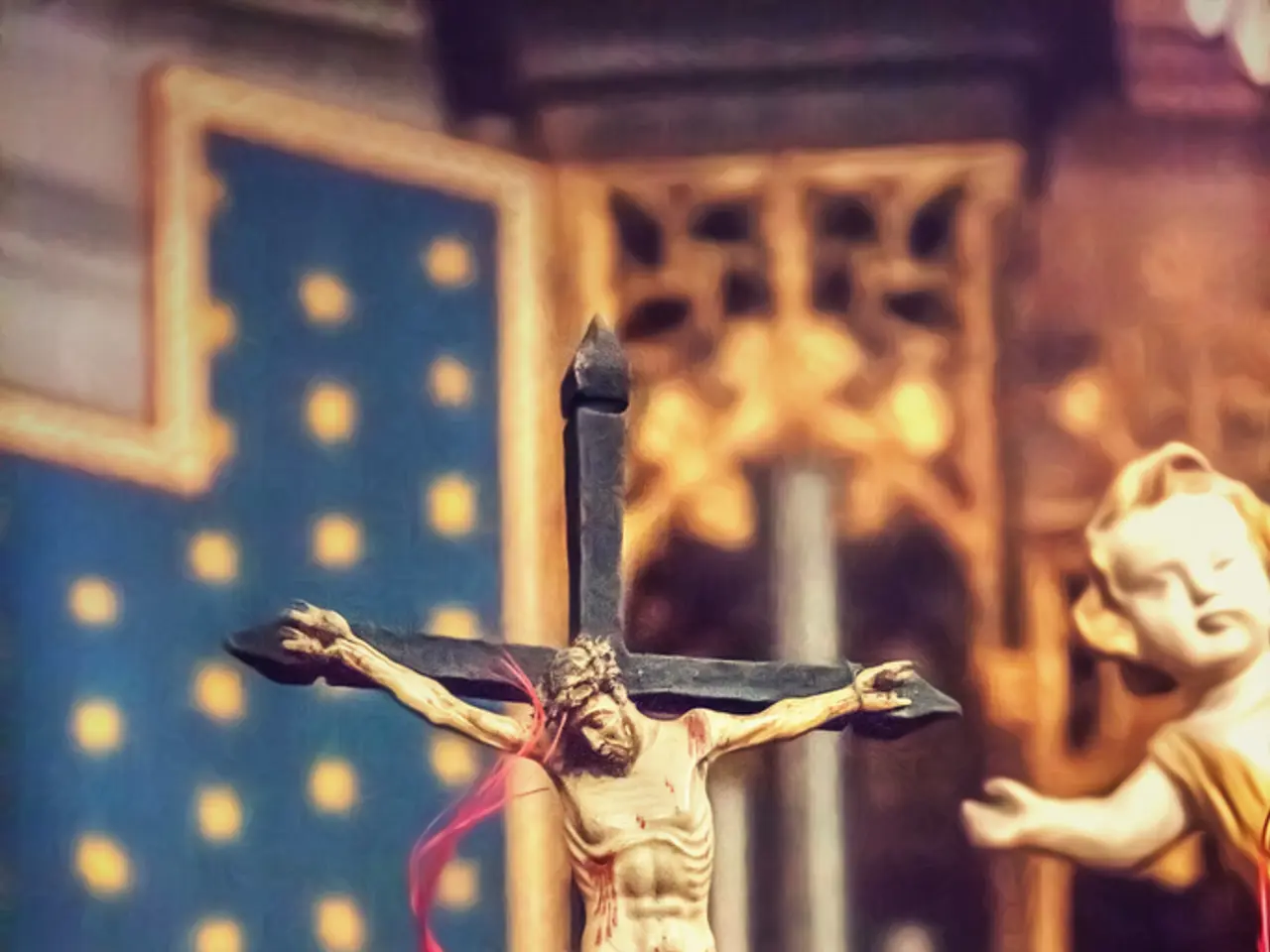Final Decision on Displaying a Crucifix in a High School Setting - High school's ruling on the presence of crucifix conclusive
Article: German Court Rules for Removal of Large Crucifix in High School
A landmark ruling by the Bavarian Administrative Court in Munich has determined that a large crucifix in a German high school should be removed, following a complaint from two students. This ruling, made on July 8, marks a significant step towards ensuring religious freedom and inclusivity in public schools.
The crucifix in question, a religious symbol of Jesus on the cross, was located in the entrance area of the high school in the Upper Bavarian district of Pfaffenhofen an der Ilm. The students who initially filed the complaint have since graduated and left the high school in Wolnzach.
The court's decision was based on the premise that the constant exposure to the crucifix infringed upon the students' constitutionally guaranteed negative religious freedom. Despite the ruling, no appeal was lodged against the refusal to allow a revision of the decision.
The ruling underscores the importance of state schools maintaining neutrality regarding religion, avoiding endorsement or imposition of any faith. It emphasizes that Christian symbols, such as crucifixes, may make non-Christian students feel excluded or discriminated against. As such, schools are directed to remove such symbols if any student raises a legitimate objection, promoting inclusion and equal treatment regardless of religion.
Education Minister Anna Stolz (Free Voters) has announced that she will intensively examine the reasoning behind the ruling. Minister Stolz, however, did not indicate any plans to remove crucifixes from other schools. She emphasized that the cross stands for respect of human dignity, tolerance, and love of one's neighbor.
The decision highlights judicial willingness to enforce secular neutrality in schools to protect freedom of conscience and belief for students from different religious or non-religious backgrounds. It sets a legal precedent for future cases involving religious symbols in public schools.
For now, the ruling does not have immediate consequences. Both the State Chancellery and the Ministry of Education consider this a case-specific decision. The ruling, however, promotes a more pluralistic, inclusive approach to religious freedom in German public schools by requiring the removal of prominent religious symbols like crucifixes when contested by students, reinforcing the constitutional rights of religious minorities to be free from imposed religious displays.
In light of the court's ruling, EC countries might reconsider the placement of religious symbols in their public schools, ensuring education-and-self-development environments that are inclusive of all students, regardless of their religious or non-religious beliefs. Vocational training programs could also benefit from adopting such a multi-faith approach, promoting diversity and inclusivity in their learning environments.




